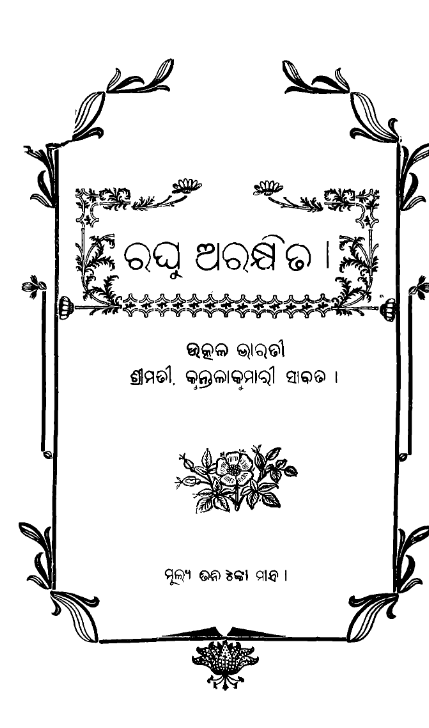In 1928, the Odia literary scene was graced by the remarkable novel Raghu Araksita, created by the visionary writer Kuntala Kumari Sabat. This novel not only marked a significant achievement in the realm of Odia literature but also laid the groundwork for showcasing the depth of emotional and social narratives in the region. Through Raghu Araksita, Kuntala Kumari Sabat emerged as a pioneer, offering readers a profound exploration of human relationships and societal structures during a transformative period in Indian history.
Raghu Araksita follows the story of its titular protagonist, Raghu, whose life is intertwined with themes of love, duty, and sacrifice. Set against the backdrop of Odisha, the narrative unfolds the trials and tribulations faced by Raghu, who is caught between personal aspirations and societal expectations. The character arcs reveal intricate relationships with family, friends, and his beloved, showcasing how societal norms often dictate personal choices and destinies.
Kuntala Kumari Sabat crafts a compelling tale that resonates with readers, weaving together the threads of personal stories against the larger tapestry of cultural and historical events. The novel portrays Raghu as a character of depth, embodying the struggles of a generation grappling with the changing tides of tradition and modernity. His journey is not merely a personal one but a reflection of the collective conscience of a society on the brink of transformation.
One of the most striking aspects of Raghu Araksita is its exploration of the theme of duty versus desire. Raghu finds himself navigating complex emotional landscapes as he confronts his responsibilities towards his family and society while yearning for individual happiness and fulfillment. This struggle is emblematic of the conflicts faced by many during the early 20th century, a time of awakening and change in India.
Moreover, Kuntala Kumari Sabat artfully employs rich imagery and symbolism throughout the novel to reflect the cultural heritage of Odisha. The integration of local customs, rituals, and landscapes not only adds authenticity to the narrative but also immerses the reader in the vibrant tapestry of Odia life. This attention to detail speaks to the author’s deep-rooted connection to her cultural identity and her desire to portray its beauty and challenges.
Beyond its personal narrative, Raghu Araksita serves as a mirror to the societal attitudes of the time. Kuntala Kumari Sabat sheds light on the constraints placed on individuals by patriarchal norms and the significance of social status. Through her characterizations, she critiques these societal structures, advocating for change and progress. This progressive outlook positioned Raghu Araksita as not only a novel but a call for social consciousness and reform—a reflection of the author’s own beliefs.
Books Info
| Books name | Raghu Araksita / ରଘୁ ଅରକ୍ଷୀତ |
| Author | Kuntala Kumari Sabat |
| No Of pages | 319 |
| Publisher | NA |
| Publication | 1928 |
| Printed At | The Utkal Sahitya Press |
| Distributor | NA |

